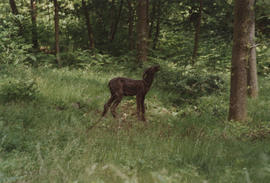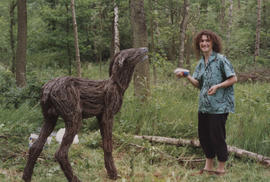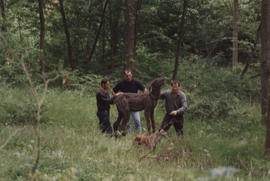University of Gloucestershire Archive
- UA
- Collection
- [1683] 1827 - present
The origins of Cheltenham Training College grew from the reformation of the education system in England during the nineteenth century. The National Society for Promoting Religious Education was established in 1811 with the aim of providing a school in every parish that would teach the poor guided by the principles of the established church. These would be financed through voluntary subscriptions. Another movement, The British and Foreign School Society, was established in 1808 although was non-conformist. Schools established by either movement were known as “National” or “British” respectively, and both were operating before the introduction of state-co-ordinated schooling by The Forster Act of 1870. Prior to this date the government had provided school-building grants to both societies and had instigated school inspections.
Due to the growing need to supply trained teachers, The National Society collaborated with a number of individual dioceses to establish several training colleges between 1839 – 1840. This coincided with the introduction of the pupil-teacher system, where the state supported good school pupils to continue in the role from age 13 to 18. Queen’s Scholarships were introduced for those pupil-teachers passing the training college entrance examinations, with the state funding their places at college.
In Cheltenham, the Evangelical clergyman Reverend Francis Close had been appointed to the parish of St Mary’s (now Cheltenham Minster) in 1826. He had an interest in infant education and helped to found several National Schools in the town. At the same time, Dartmouth merchant and Evangelical businessman Samuel Codner had set up 43 schools in Newfoundland. Whilst staying in Cheltenham during August 1845 he wrote to Close advocating the establishment of a National teacher-training college in Cheltenham. The suggestion was pursued by Close and at a meeting of likeminded individuals on 23 September 1845 the decision was taken to open a college, under the guise of the Church of England Training School Association. The new Cheltenham Training College was eligible for both building and maintenance state grants, along with receiving voluntary subscriptions. The college opened a male department on 1 June 1847 and female department on 2 July 1847, both in separate rented accommodation in the town. Reverend C H Bromby became the first Principal. There were 200 Life Governors, comprised of 100 clerical and 100 lay. All governors paid a small subscription and were expected to recruit students for the college. The foundation trust document of 1848 states “that the religious education to be conveyed shall always be strictly Scriptural, Evangelical and Protestant and in strict accordance with the Articles and Liturgy of the Church of England”.
The executive committee set about planning the main college building for the male department, there being more male applicants to college, with the female department occupying the recently vacated hospital (now Normandy House on the Lower High Street). They received the donation of six acres of land and £500 from local resident Miss Jane Cook, along with other donations and the government grants. The new building was designed by Samuel Daukes to house 100 students and opened on 8 April 1850, costing £11,700 (now Francis Close Hall). It became the largest training college in the country.
The female department gained their own purpose-built accommodation in 1869 with the opening of Shaftesbury Hall (now Chelsea Square apartments), mainly funded by the proceeds of the closure of the Metropolitan Training College at Highbury. By 1897 the college year had moved from two terms starting in January each year to the more familiar three-term system beginning in September. In 1906 the Board of Education sanctioned the use of the names “St Paul’s College” and “St Mary’s Hall”, which had been unofficially used for the male and female departments since the 1880s. However the official titles of “St Paul’s College” and “St Mary’s College” were not introduced until 1921 when Cheltenham Training College split, still retaining the same governing body and sharing facilities. Both colleges continued to grow, with St Mary’s purchasing The Park site in 1930 (now the University’s Park Campus). In 1947 the colleges joined the University of Bristol’s Institute of Education.
In 1979 the colleges merged once more to form the College of St Paul and St Mary, and in 1990 this merged with the higher education strand of the Gloucestershire College of Arts and Technology (GLOSCAT) to form the Cheltenham and Gloucester College of Higher Education (CGCHE). The GLOSCAT merger brought with it Pittville Campus, which had been purchased by Gloucestershire College of Art in 1961, and Oxstalls Campus in Gloucester. In 1992 CGCHE was given permission to award its own undergraduate and taught postgraduate degrees, followed by research degrees in 1998. On 23 October 2001 the college was awarded university status, becoming the University of Gloucestershire. The re-designed Oxstalls campus opened in 2002.
Cheltenham Training College



